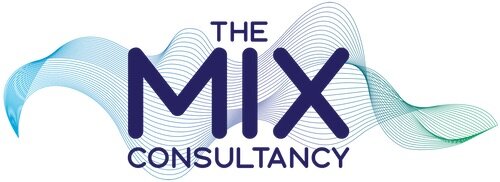What Equipment Do You Need To Start A Home Studio? (Pt.2)
In the previous installment we got set up with a computer and a way of monitoring what came out of it. As we said, if all you want to do is compose, edit and mix then this is all you need, but if you want to record things that are out in the real world then you need a few more things.
Interface
What you need here really depends on how many things you want to record at once, and how many microphones you intend to have up to record them as you’ll need enough inputs to cope with this. For example, if you are making electronic music and want to add vocals then you’ll probably only be recording one microphone at once (the vocal mic) which needs one input. You may decide to buy some hardware synths in future with stereo outputs, so they will require an interface with two inputs. If this is the kind of set-up you are envisaging then the good news is that the simple UAD, Focusrite and SSL interfaces that I mentioned in the previous article also work for you – they all have at least two inputs. You need mic amps (sometimes called mic pre amps or mic pres) to amplify the low level you get from a microphone, but these simple interfaces invariably have these built-in.
Things get more interesting if you want to start recording bands with lots of equipment, and you want to record everyone at once. For example, when recording a drum kit, I’ll normally have about twelve microphones around it in various positions – that’s twelve inputs needed just for the drums. Add mics for the guitars, piano, singers etc and the input count gets higher - and the cost of the interface that you’ll need gets higher too. Brands to look for here are actually UAD and Focusrite again, and I’ve also heard great results from Apogee and Lynx which are in the mid-range in terms of price. On the top end you have brands like Prism and Burl which are another level again (I use Burl myself and love them).
Microphones
The question “what’s the best mic for…” comes up an awful lot, and to be honest, any answer you get must be taken with a pinch of salt. This is because the replies will be based on people’s individual recording experience. For example, I could put mic X in front of a singer and it sound amazing. I could then go on to recommend that mic to everyone as THE BEST MIC FOR VOCALS. The thing is, it was the best mic for that vocalist, and in tandem with the mic amp I used and the interface I have. Everyone’s voice is different, so there is no one answer. What I would recommend is to try and build yourself a small selection of flavours in terms of microphones, so you have a few choices when you come to record someone. This is a better use of a budget than throwing it all one on mic and hoping it’s the world’s greatest all-rounder.
The best place to start is dynamic mics. I won’t get too deep into the construction and function of microphones on this post, but the advantage of dynamic mics is that they tend to be a bit cheaper and less sensitive than condensers. If you don’t have a very well isolated room then this is a bonus, as the extraneous noise around your studio is less likely to end up on your recording. Shure are really the leaders in this field, but I’m a big fan of Audix too. The classic Shure SM57 or SM58 (or the equivalent Audix i5) will do a great job of recording guitar amps, percussion and so on, and the slightly more expensive Shure SM7B can hold it’s own against mics twenty times it’s price when recording vocals or more delicate instruments. Adding a condenser to your collection is a great idea and should give you options in recording more sensitive sounds - often having a better response to brighter sound sources. In terms of bang-for-buck the Aston range is the best I’ve used personally, but I know this is a crowded field, and if you can try one or two out before you buy then I would highly recommend it. Ribbon mics are another option, but I would go for the dynamic and condensers first as they tend to have wider applications. Ribbons are good at very natural sounds, but often have a bit less in the mid-range which means they don’t poke through a mix as easily. Personally, I would have a couple of options in both dynamics and condensers before I started looking at ribbon mics. A final point on mics. Some high-end and vintage mics of great renown have tubes/valves in them. The tubes are an important part of the design, of course, but some people have come to the conclusion that if a bit of audio equipment has a tube in it then it is automatically high quality. This is very far from the truth. Don’t be one of those people. Use your ears. Don’t believe the hype.
What’s next?
We all like buying gear, let’s face it. So, you will want to upgrade eventually. Here’s the order that I would start to look at doing that.
1. Plugins. You’ve got a lot of choices here. My God, you’ve got a lot of choices. I’ll simply recommend some manufacturers that I think make consistently great products, so perhaps you can start with them when you are shopping. UAD, Sonnox, SoundToys, PSP, LiquidSonics, and FabFilter have always impressed me. On the other hand, I would not touch a Waves product if you paid me. Yes, there’s a story behind that sentence. Feel free to ask me about it sometime. Maybe before you are considering swapping some of your hard-earned money for a Waves product.
Also remember that November is the best time of year to buy plug-ins as everyone is competing for your ‘Black Friday’ money. If you can wait until November to buy something, then you absolutely should.
2. Microphones. I mentioned having lots of options is good when it comes it microphones. I’m restating that here.
3. Microphone pre-amps. There are almost as many different choices of microphone pre-amp as there are microphone. They each lend a particular flavour to your signal, so having a few options here would also be a good upgrade path. The 500-series format seems particularly popular for these items (even the biggest analogue console manufacturers like API, Neve and SSL have 500-series mic pres available), and there are increasingly good opportunities for people who are handy with a soldering iron to build great mic pres at low cost (such as CAPI, Sound Skulptor and Hairball Audio).
Hopefully all that info has given you some food for thought to get you started. If I can finish with one last piece of advice it would be to draw up a list of what you absolutely need to get going, and then a list of the equipment that you would like to buy in the future to upgrade your studio. Keeping a list, and only buying off that list, can prevent you from succumbing to ‘shiny object syndrome’ where you’re constantly blowing your budget on items that you don’t really need, but that you just read about and sound exciting. Ever done that? Me too.








